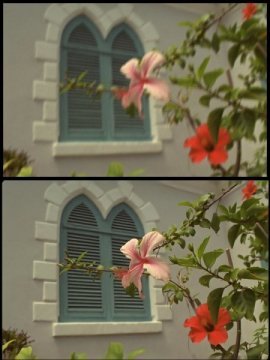New Image Corruption Repair ~and~ What it Could Mean for the Technology Field
Be it download, upload, transfer, or just about any other process dealing with digital images, imperfections like blur and noise always seem to be a problem, but not anymore, according to a team of computer scientists from the University of Maryland. Apparently, they've designed a new algorithm to correct for corruptions like these, on which a more detailed article about the technicalities can be found here: https://www.sciencedaily.com/releases/2017/12/171205144802.htm

Example of a corrected image
Now, being a developer myself, I've always been interested in how computers are able to "recognize" specific aspects of images. Of course I understand that it's able to check a portion of data with a previously stored one pertaining to, say, a blurred effect, and then convert this to a more ideal chunk, but still it blows my mind. Focusing on the relative popularity in the photography tag on steemit recently, I've been pondering how developments like these can help professional and amateur photographers alike. Even further, how can this give assistance to forensic scientists and detectives looking at possibly corrupted footage or images? The possibilities of this are, well, endless.

Example of an AI image recognition
Looking into this algorithm further, I've been thinking about it from the perspective of Artificial Intelligence developers. Is the ability to recognize advanced patters and respond with another, "ideal", pattern not a major factor in neural networks? How will new developments like these improve upon tactics taken in AI programming? Obviously it's hard to tell now, and I'm not saying an image correction algorithm is going to revolutionize the computer science field, but it is interesting to think about what effects it could have. Either way, I'm incredibly excited for the future of this field and what may come from it.
I gotta say, this topic is completely out of my realm of understanding. From what I got from the article however, it seems that this algorithm is super early in development. I want to see this thing in action with much more complex images such as hair and water.
Anyway, great post that got me interested in a topic I've never explored before.
Yeah, like I said it's still too early to tell. There's not really much we can glean on how advanced the algorithm is, but I can't wait until we seem more about it!
I've heard very vaguely of this before. Iv'e also heard of a way to "fool" the AI into recognizing something different than what's in the photo via placement, angles or patterns on an object. Could this be a major problem for the technology?
Interesting point Mason, it's actually something I've considered before. When looking at it from an AI perspective, this is def something that would likely be tested by developers, that is, fooling their creation, to try to force it to learn to protect itself from aspects like that. How efficient it will be, only time will tell.